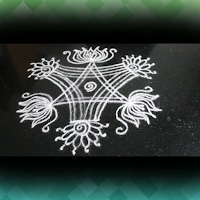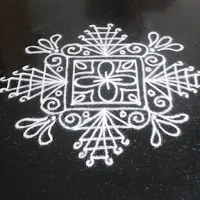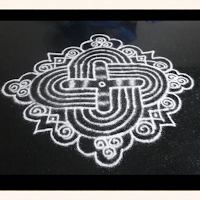Easy rangoli designs - beginners
30+ rangoli kolam simple designs Though I have drawn all the designs myself personally I am thankful to my family for the inputs, information and help in drafting all the posts so far. I have used the terms kolam rangoli quite freely in all the posts. Probably there would have been differences based on classical (!) explanations in the past but today kolams can also be colourful like rangolis both in the free hand and dots type I find that even the terms rangoli kolam and kolam rangoli are used at present. The only area where I think kolam are different are in sikku kolam and arisi maavu kolam. Both are beautiful, challenging and can be intricate. Rangoli is muggulu in Telugu and so this post will be useful for those in search of small and simple muggulu for beginners. This post may have answers kutty rangoli /kolam designs The rangoli in the image below is one of the basic designs that can be used for learning. Form a star w...




Comments